Draft North East Cambridge Area Action Plan
Our vision and our ten big questions
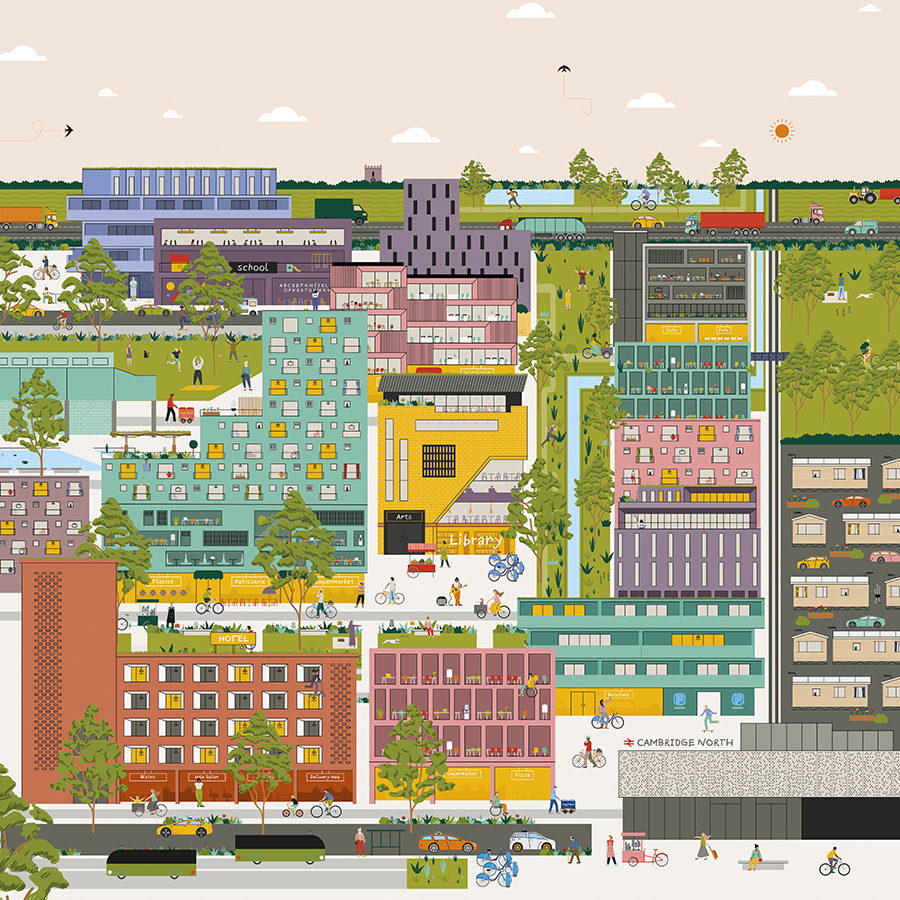
1.1 Our vision for North East Cambridge
We want North East Cambridge to be an inclusive, walkable, low-carbon new city district with a lively mix of homes, workplaces, services and social spaces, fully integrated with surrounding neighbourhoods.
We have established some important principles to guide new development in the area, which we have developed in consultation with residents, businesses and stakeholders:
- North East Cambridge must respond to the climate and biodiversity emergencies, leading the way in showing how we can reach net zero carbon.
- It must have a real sense of place – a lively, mixed-use, and beautiful area which fosters community wellbeing and encourages collaboration.
- It should be firmly integrated with surrounding communities – physically connected, and socially cohesive.
- It will provide a significant number of new homes, a range of jobs for all, local shops and community facilities.
- It must be a healthy district where wellbeing, recreation and community safety are built into its design.
- It will be planned around walking, cycling and public transport first, discouraging car use, in order to address climate change.
You can read more about these strategic objectives in the section on Context and Objectives.
(479) Question 1. What do you think about our vision for North East Cambridge?
1.2 Connected and integrated
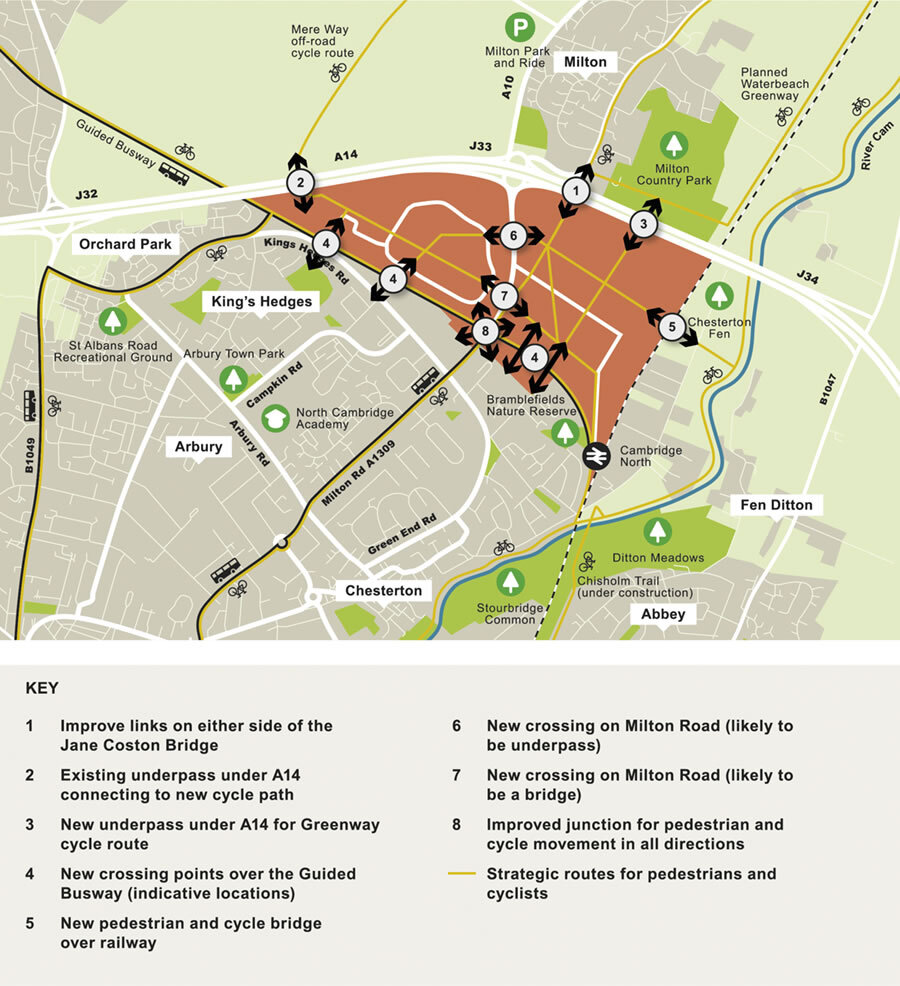
New development in North East Cambridge will be accessible for everyone. People must be able to walk and cycle across North East Cambridge easily and safely, from the villages to the city centre.
The whole of the Area Action Plan area is within a 10 minute cycle ride or a 30 minute walk from Cambridge North station. The street network will enable a seamless transfer from public transport to walking and cycling, ensuring that those who commute into the area don't need to drive to work.
The Area Action Plan includes new and improved crossings across Milton Road, the A14, the Guided Busway and other major routes, linking surrounding neighbourhoods with the new ones that will be forming. We will also be working with our partners and developers to maximise the availability and capacity of public transport in the area.
Read more about Connectivity.
(406) Question 2. Are we creating the right walking and cycling connections to the surrounding areas?
1.3 Social and cultural hubs
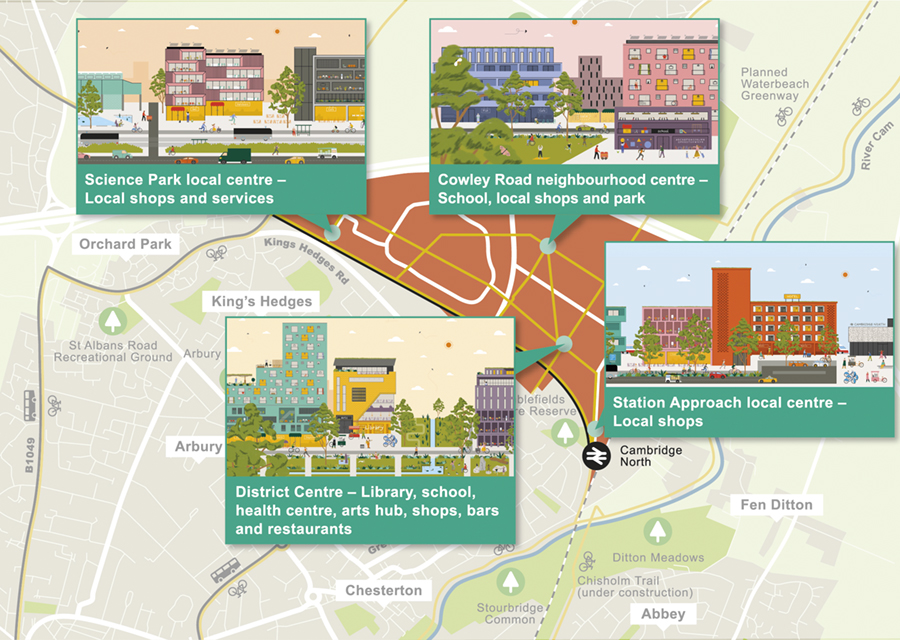
We are planning four centres within North East Cambridge to create active, lively focal points for new and existing residents and workers. These will include shops, places to eat and drink, and community facilities.
Two centres will be located at the edge of the Area Action Plan area, where they will help to serve and integrate new and existing communities – around Cambridge North Station, and on the edge of the Cambridge Science Park near Cambridge Regional College. Another local centre will be created near St John's Innovation Park, and the larger district centre – with shops and restaurants, community and cultural facilities – will be located centrally to the main area of new development.
All the centres are located along key walking and cycling routes, making them lively and attractive places for businesses and residents.
Read more about North East Cambridge Centres .
(337) Question 3. Are the new 'centres' in the right place and do they include the right mix of activity?
1.4 Homes and workplaces
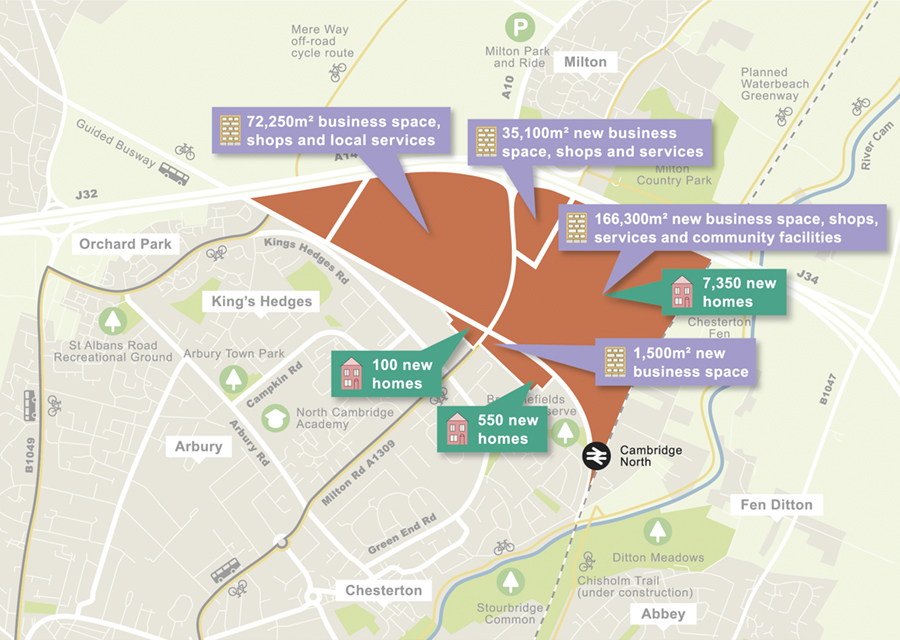
We would like workspace, industrial space, homes and other activities to successfully coexist alongside, above and below each other to make best use of land. Currently there are only 3 homes on the site, while there are 15,000 jobs on the existing business parks and industrial estates.
We are planning for 8,000 new homes of different sizes and types. Around 40% of new homes will be genuinely affordable (rented and shared ownership) homes.
Alongside this, we are planning for a diverse and adaptable range of space for business, from start-ups to industry. This will bring about 20,000 new jobs to the area. We will ensure that there is no overall loss of industrial floorspace as we know how important this sector is for Greater Cambridge's economy.
Read more about Jobs and Homes.
(357) Question 4. Do we have the right balance between new jobs and new homes?
1.5 Social and cultural facilities
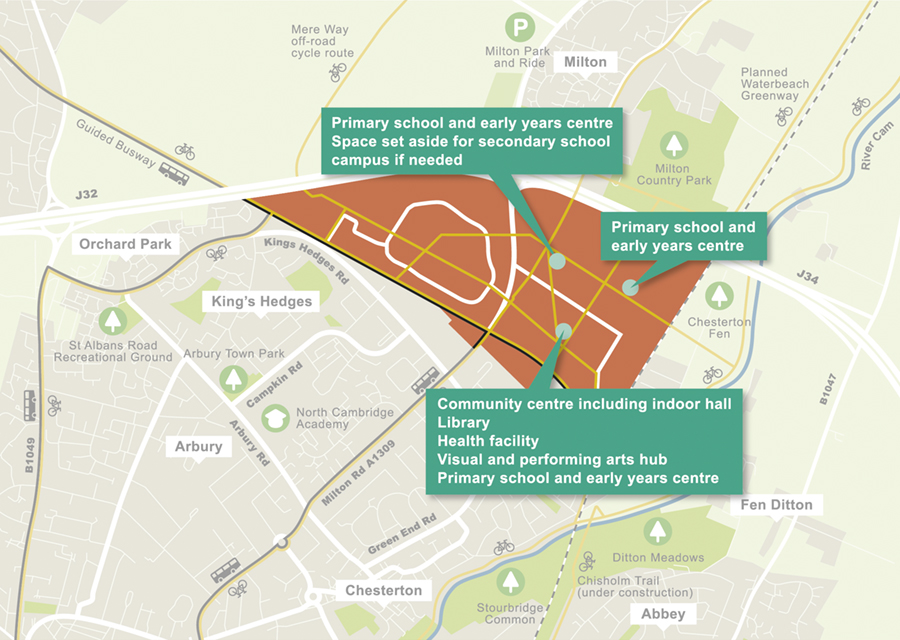
North East Cambridge will provide social and cultural facilities for existing residents living in the surrounding areas, as well as new residents and workers. The Area Action Plan plans for three new primary schools, and sets aside space for a secondary school if it is needed in the future. We also expect development to provide health facilities, a library, cultural facilities and a community centre.
The Area Action Plan requires that community services, including education and health provision, are provided as they are needed, so that we don't put pressure on existing resources. We also plan to improve existing community facilities in the area, and 'meanwhile' projects, working with existing local communities on short-term and temporary initiatives while the main sites are in development.
Read more about social, community and cultural facilities.
(313) Question 5. Are we are planning for the right community facilities?
1.6 Building heights and density
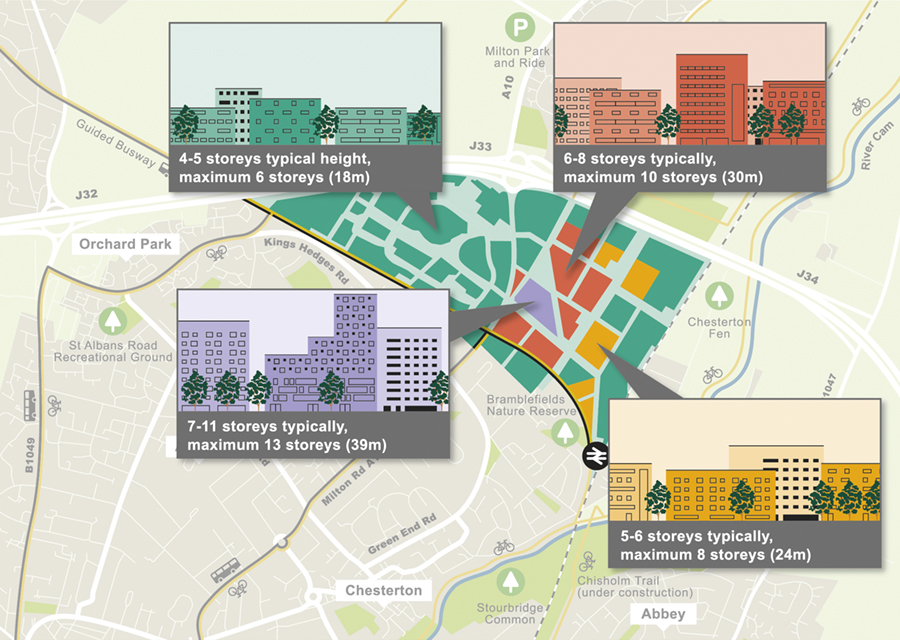
North East Cambridge is a very sustainable place to build – it is brownfield land, with good public transport, walking and cycling links. We want to maximise the opportunity this gives to build a critical mass of new homes and workspace in the area, meaning that more people can lead their daily lives without using the car, and reducing the amount of land we need to develop elsewhere in Greater Cambridge.
We have worked carefully to develop suggested building heights that will not have a negative impact on their context. On most of the site, we think that buildings could be around 4-8 storeys, while at the centre of the site, we are currently proposing that buildings could be up to 13 storeys high to create a visual focus around the district square. We are working with Historic England on further analysis of building heights on the historic setting of Cambridge, heritage assets and key views across the area.
Read more about our proposed approach to design and built character.
(369) Question 6. Do you think that our approach to distributing building heights and densities is appropriate for the location?
1.7 Open spaces
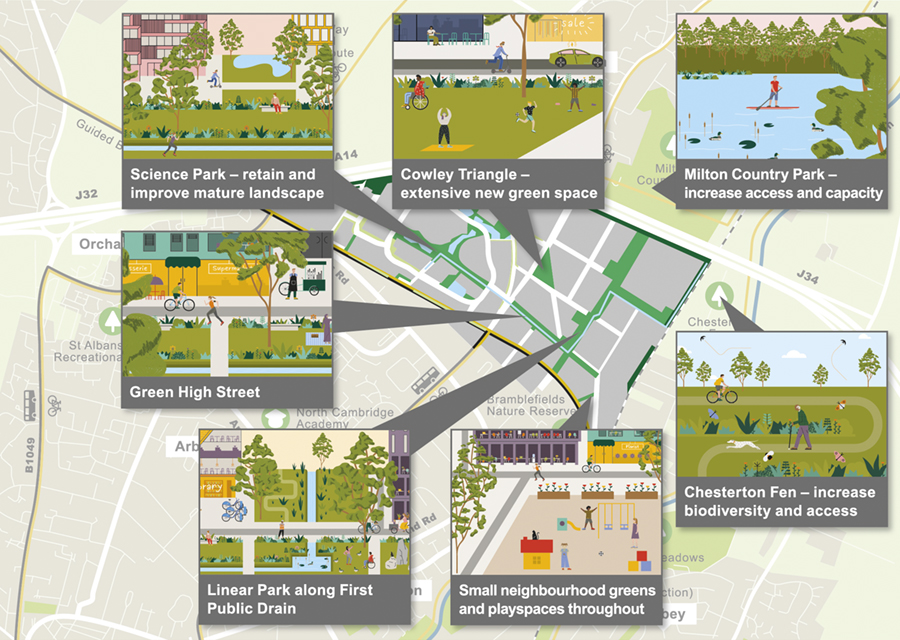
Alongside lively mixed-use development we want to make sure that everyone has access to good quality public open spaces, to benefit their health and wellbeing. The Plan proposes a new linear park stretching from Milton Country Park to Nuffield Road, and many other green spaces across the area.
We will also be improving access to nearby green spaces such as Milton Country Park and Chesterton Fen, which is between the Area Action Plan area and the River Cam. This will be connected to North East Cambridge by a new pedestrian and cycle bridge over the railway line.
Read more about our plans for open spaces.
(374) Question 7. Are we planning for the right mix of public open spaces?
1.8 Biodiversity
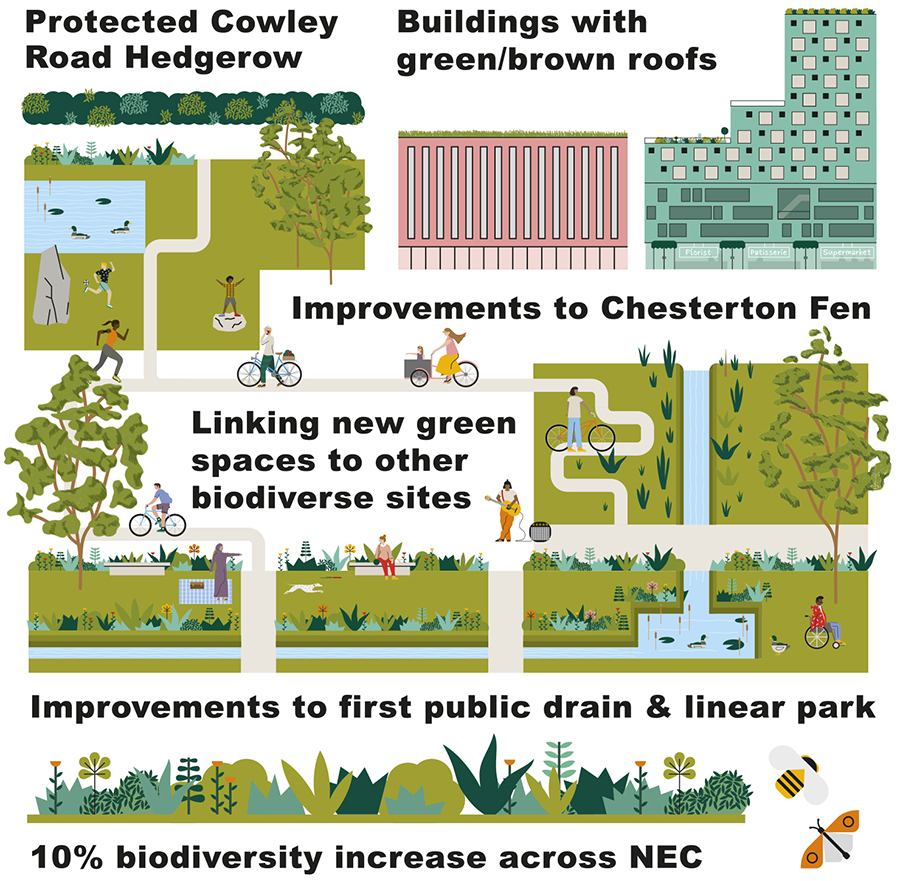
All new development in North East Cambridge will be required to prove that it will increase biodiversity in the area – what is known in policy terms as 'biodiversity net gain'. We propose that this is achieved through a number of different methods.
Firstly we want buildings themselves to integrate biodiverse features such as green roofs, and bird and bat boxes. But we also want to ensure that existing havens for biodiversity in the area are safeguarded and improved. We will ask development to contribute to improvements at key sites for nature including Milton Country Park and Chesterton Fen.
Read more about our plans for biodiversity.
(322) Question 8. Are we doing enough to improve biodiversity in and around North East Cambridge?
1.9 Discouraging car use
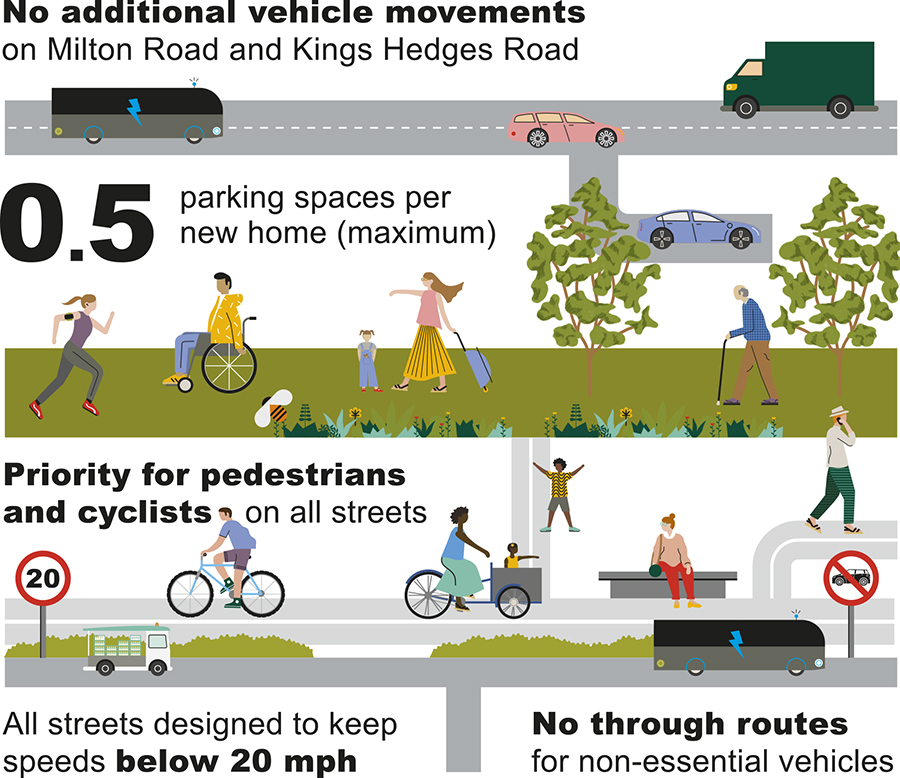
We want to encourage sustainable, active travel and discourage all non-essential vehicle traffic – this is important for tackling climate change, and for health and wellbeing. The Plan is based on not increasing the amount of traffic on Milton Road at all. We plan to achieve this through designing the area to make walking and cycling the easy and natural choice, being more efficient about how car parking is allocated, and limiting the amount of parking that is built for new homes.
We also want to see smart ways to manage deliveries into the area, and we will be safeguarding space for future public transport improvements such as Cambridge Autonomous Metro (CAM).
Read more about our plans for managing motorised vehicles.
(369) Question 9. Are we doing enough to discourage car travel into this area?
1.10 Climate change
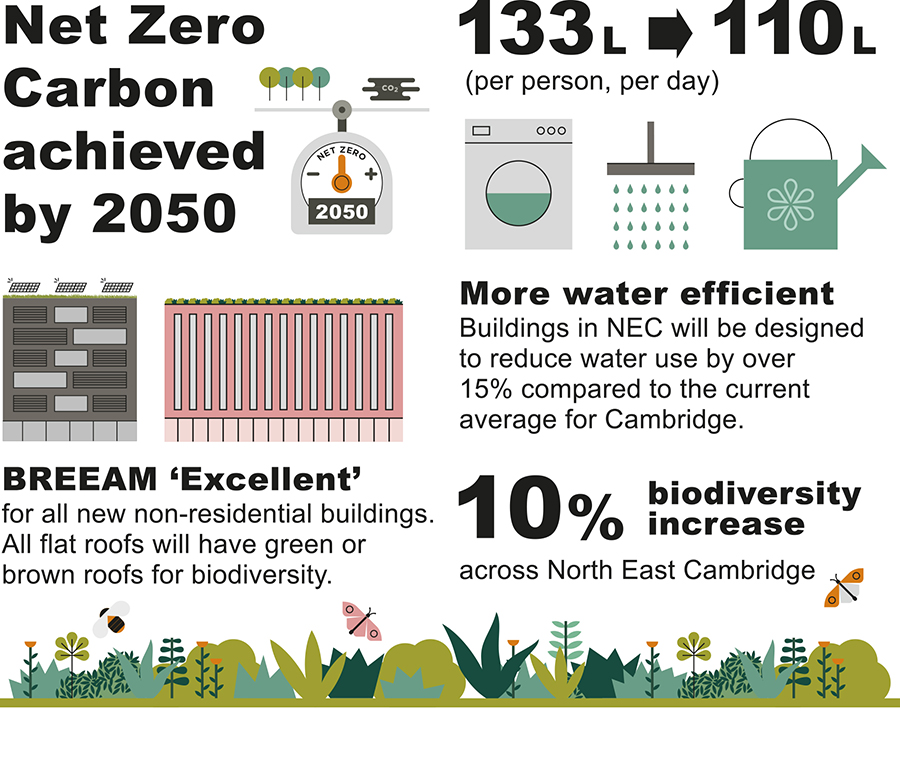
Responding to the climate emergency runs through every aspect of our plans for North East Cambridge. Its location means that we can make the area an example of how we can achieve genuinely low-carbon development. This means reducing the emissions resulting from construction; the energy used to heat, light and maintain new buildings; and encouraging the people who will live and work here to lead low-carbon lifestyles.
We are proposing robust targets for new development in terms of energy use, water conservation, and limiting how private cars can be used in the area. We propose that developers should consider lifecycle carbon costs for their buildings, and that all buildings are designed to be resilient to the climate change that will happen over the coming decades – the warmer summers and wetter winters that we will experience.
Read more about our approach to designing for the climate emergency.
(380) Question 10. Are we maximising the role that development at North East Cambridge has to play in responding to the climate crisis?
(91) Question 11. General comments
